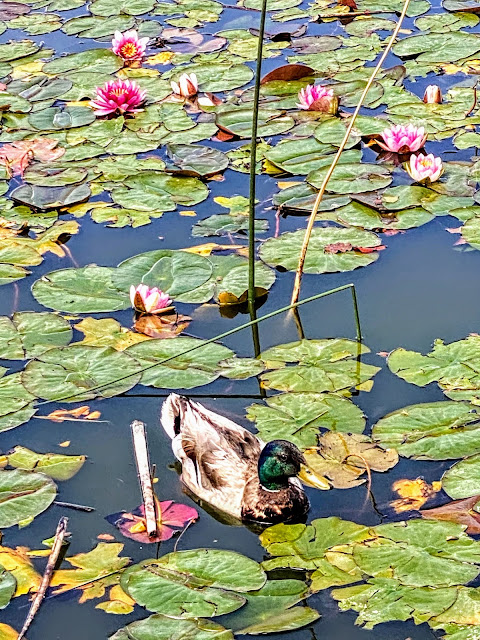The Baton Rouge Louisiana Temple was the first temple built in Louisiana.
The establishment of the Church in Louisiana began in January 1841 when the Prophet Joseph Smith received a letter from two Louisiana Saints saying a small branch of the Church existed in New Orleans and asking for an elder to be sent. By 1955, the state's first stake had been established in the same city.
The groundbreaking ceremony for the Baton Rouge Louisiana Temple was presided by Elder Monte J. Brough, president of the North America Southeast Area, on May 8, 1999. It was held on the same day as the groundbreaking ceremony for the Suva Fiji Temple.
During the construction of the Baton Rouge Louisiana Temple, the construction missionaries held weekly open houses to provide members and visitors with updates on the construction progress. Many were gifted with a small piece of marble from the temple.
Young women in the temple district polished and hung the crystals for the Celestial Room chandelier of the Baton Rouge Louisiana Temple with the help of their mothers. When they discovered it hadn't turned out quite right, they repeated the entire process to correct their error.
Over 18,500 guests attended the weeklong open house for the Baton Rouge Louisiana Temple including government officials, religious and community leaders, media representatives, 125 neighbors, and friends of other faiths who patronized the local family history centers.
The Baton Rouge Louisiana Temple was dedicated in four sessions by President Gordon B. Hinckley. Over 4,600 members attended the sacred services. The temple was frequently referred to as a "house of refuge."
Five years after the dedication of the Baton Rouge Louisiana Temple, the region was devastated by Hurricane Katrina in August 2005, resulting in a death toll of 1,836. Miraculously, all Church members survived, though some lost everything they had. The stake center next to the temple was used as a safe place for displaced victims. In the weeks following the storm, the temple operated with very few workers and patrons. By 2006, so many patrons were arriving, they had to be put on standby.
The Baton Rouge Louisiana Temple closed on January 28, 2018, for an extensive renovation that enclosed the portico, reshaped the steeple, reclad the exterior in limestone, and replaced the windows with beautiful art glass featuring a shell and magnolia flower motif. The interior of the temple was refinished and refurnished with French-inspired accents and murals in the first endowment room. The landscaping was redesigned to better accommodate patron gatherings and to feature more gardens.
The Baton Rouge Louisiana Temple was the first temple built in Louisiana.
The establishment of the Church in Louisiana began in January 1841 when the Prophet Joseph Smith received a letter from two Louisiana Saints saying a small branch of the Church existed in New Orleans and asking for an elder to be sent. By 1955, the state's first stake had been established in the same city.
The groundbreaking ceremony for the Baton Rouge Louisiana Temple was presided by Elder Monte J. Brough, president of the North America Southeast Area, on May 8, 1999. It was held on the same day as the groundbreaking ceremony for the Suva Fiji Temple.
During the construction of the Baton Rouge Louisiana Temple, the construction missionaries held weekly open houses to provide members and visitors with updates on the construction progress. Many were gifted with a small piece of marble from the temple.
Young women in the temple district polished and hung the crystals for the Celestial Room chandelier of the Baton Rouge Louisiana Temple with the help of their mothers. When they discovered it hadn't turned out quite right, they repeated the entire process to correct their error.
Over 18,500 guests attended the weeklong open house for the Baton Rouge Louisiana Temple including government officials, religious and community leaders, media representatives, 125 neighbors, and friends of other faiths who patronized the local family history centers.
The Baton Rouge Louisiana Temple was dedicated in four sessions by President Gordon B. Hinckley. Over 4,600 members attended the sacred services. The temple was frequently referred to as a "house of refuge."
Five years after the dedication of the Baton Rouge Louisiana Temple, the region was devastated by Hurricane Katrina in August 2005, resulting in a death toll of 1,836. Miraculously, all Church members survived, though some lost everything they had. The stake center next to the temple was used as a safe place for displaced victims. In the weeks following the storm, the temple operated with very few workers and patrons. By 2006, so many patrons were arriving, they had to be put on standby.
The Baton Rouge Louisiana Temple closed on January 28, 2018, for an extensive renovation that enclosed the portico, reshaped the steeple, reclad the exterior in limestone, and replaced the windows with beautiful art glass featuring a shell and magnolia flower motif. The interior of the temple was refinished and refurnished with French-inspired accents and murals in the first endowment room. The landscaping was redesigned to better accommodate patron gatherings and to feature more gardens.
















